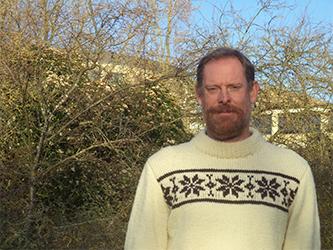
I have always held a deep fascination with the natural world and this was almost certainly fuelled by my early years living in Zambia and seeing first-hand the amazing African wildlife. My first experiences working with plants came when I joined the group of Brian Staskawicz at the University of California, Berkeley, to do a year-long undergraduate research placement. It was an incredibly exciting time to be in Brian’s lab, I joined a project in which we cloned one of the first resistance genes, at a time when very few genes had ever been cloned from plants. I was hooked, on plants, on genetics and on plant-microbe interactions. After my PhD, also with Brian, I wished to stay in plant-microbe interactions, but I wanted to change fields. I joined the group of Sharon Long at Stanford University and benefited immensely from the many years of hard work that had gone into making Medicago a model system in which we could dissect the processes that supported nitrogen-fixing symbioses.
I spent 15 years working at the John Innes Centre, attempting to understand how plants perceive symbiotic microorganisms present in the rhizosphere. Having contributed to a detailed understanding of symbiosis signalling, I now want to understand how this signalling process activates the developmental changes in the root leading to the formation of a nodule and intracellular bacterial infection. In part, this shift in my research programme is driven by a fascination of how plant development is regulated by plant-microbe signalling, but it is also driven by the realisation that these developmental processes, rather than signalling, is what differentiates plants such as legumes that can associate with nitrogen-fixing bacteria from those plants, such as cereals, that cannot.
My research has always focused on developing a detailed understanding of symbiotic associations and is driven by a fascination of how these processes work. However, in the last 5 years I have teamed up with the Bill and Melinda Gates Foundation on a programme of research to engineer nitrogen-fixing cereals. There remains much to be discovered before we are likely to be able to transfer nitrogen fixation to cereals. However, I am very excited by the prospect that some day this research could address one of the greatest limitations to agricultural productivity and I am particularly motivated by the fact that the beneficiaries of my work could be some of the poorest people on the planet. I hope that the advances in our knowledge that we develop at SLCU could provide the foundations for creating more sustainable and equitable food production globally.
Further information on Giles Oldroyd can be found here.





